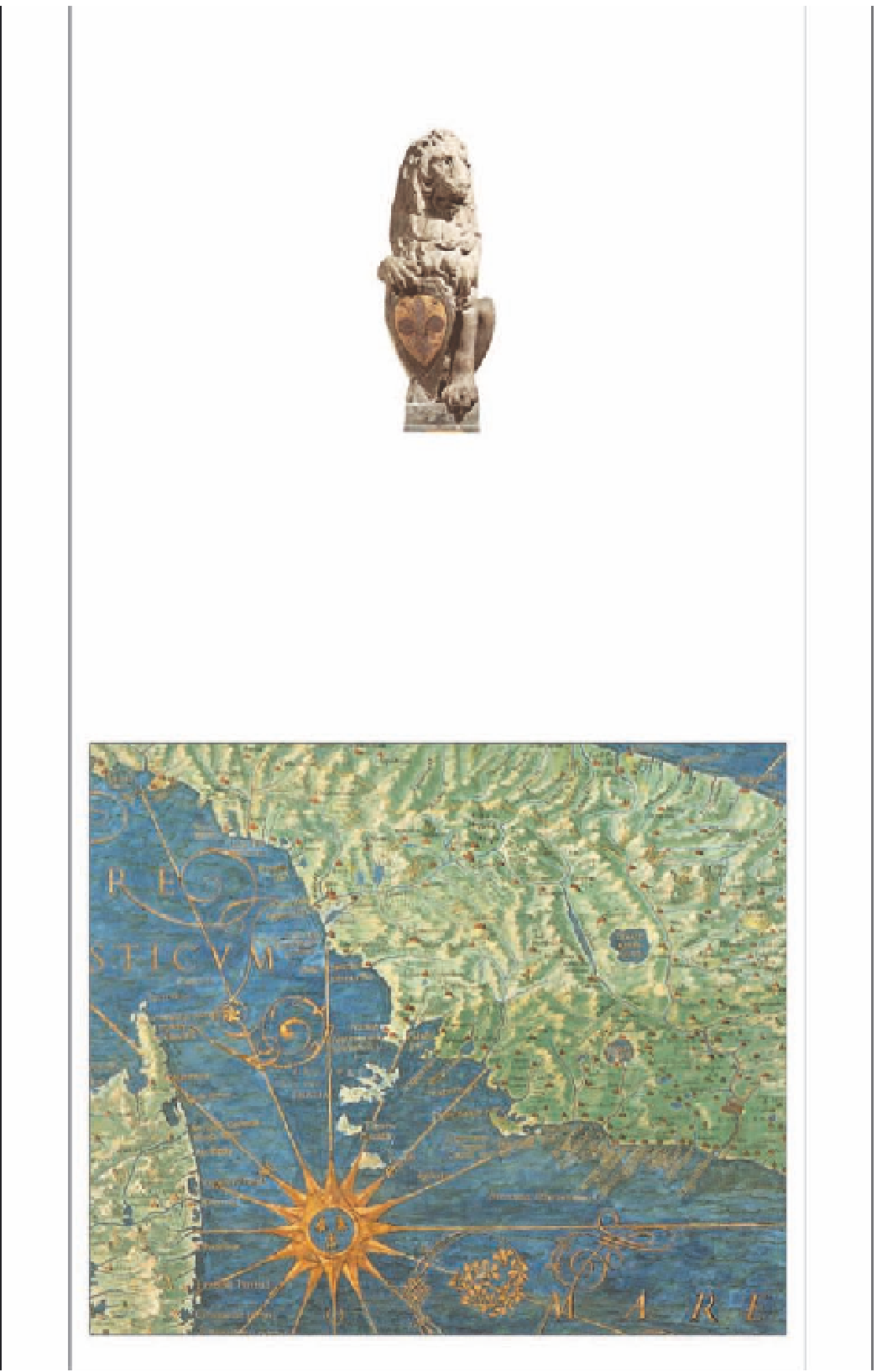Travel Reference
In-Depth Information
THE HISTORY OF FLORENCE
AND TUSCANY
Tuscany is rich in historical
of the role they played in the
region's history. They presided
over the simultaneous birth of
Humanism and the Renaissance
and, later, when they were
Grand Dukes of Tuscany, pat-
ronized eminent scientists and
engineers such as Galileo.
Tuscany has also played a part
in wider events: Napoleon was
exiled to Elba, and Florence
served briefly as capital of the
newly united Italy (1865-71).
Much damage was done to
Tuscany's art and monuments
by World War II bombing and
the floods of 1966. However, major
restoration projects undertaken as a
result have stimulated research into up-
to-date scientific methods. In this way,
Tuscany's artistic heritage continues to
inspire contemporary life - something
it has always done for the many creative
people who live and work here and for
its endless trail of admiring visitors.
monuments. Etruscan walls
encircle many of the
region's hilltop towns and the
streets within are lined with
medieval and Renaissance
palazzi, town halls testifying
to the ideals of democracy
and self-government, and
churches built on the ruins of
ancient pagan temples. The
countryside, too, is dotted with
castles and fortified villages,
symbols of the violence and
intercommunal strife that tore
Tuscany apart for so many
years during the medieval period.
Typical of these is the hilltop town of
San Gimignano
(see pp212-15)
, with
its defensive towers.
Some of the most imposing castles,
such as the Fortezza Medicea in
Arezzo
(see p198),
bear the name of
the Medici family. Their coat of arms,
found all over Tuscany, is a reminder
The Marzocco
lion, emblem of
Florence
16th-century map of Italy, showing Pisa and the river Arno leading to Florence

































